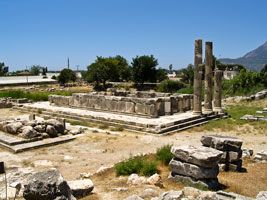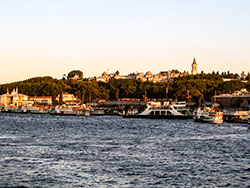The Lycian sanctuary of Letoon forms, together with the remains of the city of Xanthos, a UNESCO World-Heritage-Site.
Historical Background
Letoon is named after a large shrine dedicated to the goddess Leto, who was loved by Zeus and pursued by his jealous wife Hera. When Leto was searching for a place to give birth to the divine twin Apollo and Artemis, she was helped by wolves who led her to the Xanthos river. Hence, the name of the country Lycia, lykos being Greek for wolf.
The goddess Leto was actually of Anatolian origin and the name Leto could be derived from the Lycian word lada (woman). She became the national deity of the Lycians who built an impressive religious sanctuary for her worship. The Letoon was the official cult-centre, oracle and festival venue of Xanthos, the capital of the Lycian federation. It was also the place where all religious and political decisions of the federation were declared to the public.
The sanctuary became Christianized by the construction of a church during the Byzantine period but was abandoned during the Arab raids of the 7th century CE.
In 1962, a French expedition under Professor Henri Metzger started excavations of the sanctuary and achieved important results.
More information about the historical background of the site is available on the Lycian Turkey website.
Sights & Photos of Letoon
The archaeological site comprises three temples dedicated respectively to Apollo, Artemis, and Leto. The temples date from the 3rd - 4th century BCE. To the south-west of the terrace with the three temples, there is a nymphaeum, built in the time of Emperor Hadrian (117-138 CE), in the form of a semicircular portico with a basin 27 m in diameter. In the vicinity, on the slope of a hill about a hundred metres from the temples lies a large well-preserved Hellenistic theatre with a capacity of 5,700 seats.
https://turkeyphotoguide.com/letoon#sigProIdf296c39f8a




















